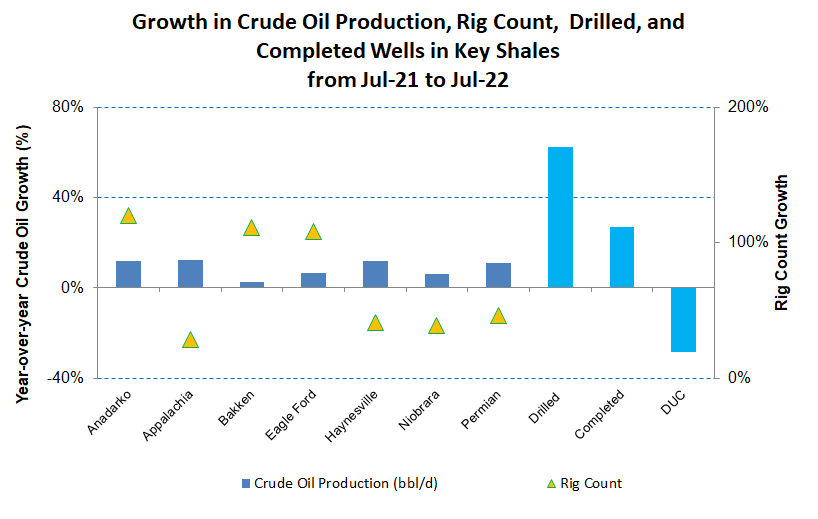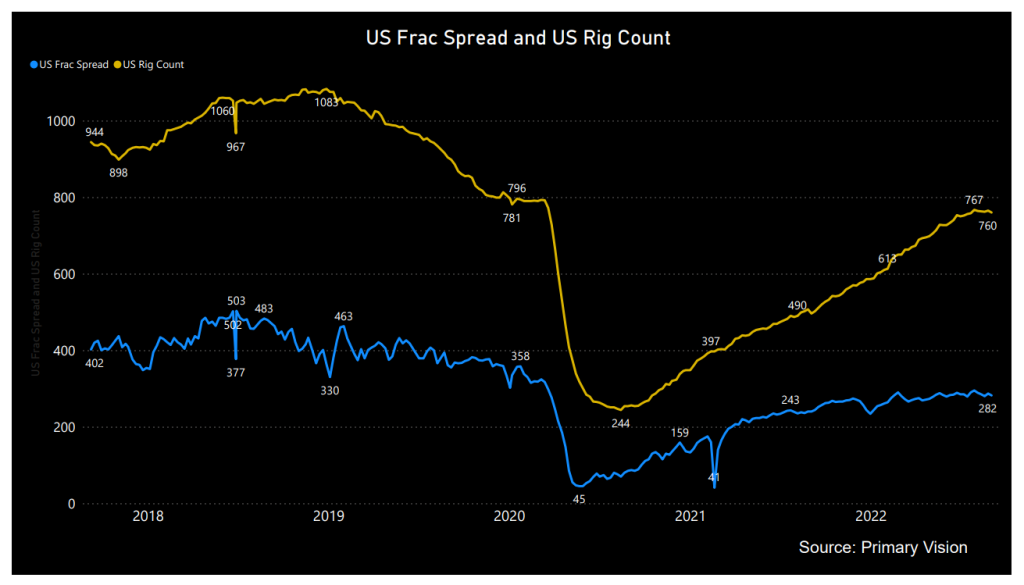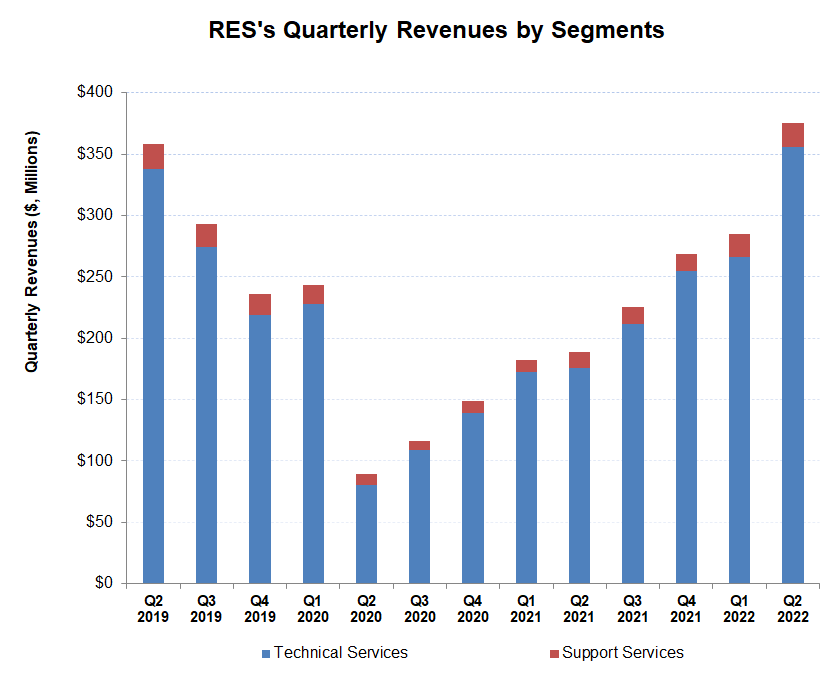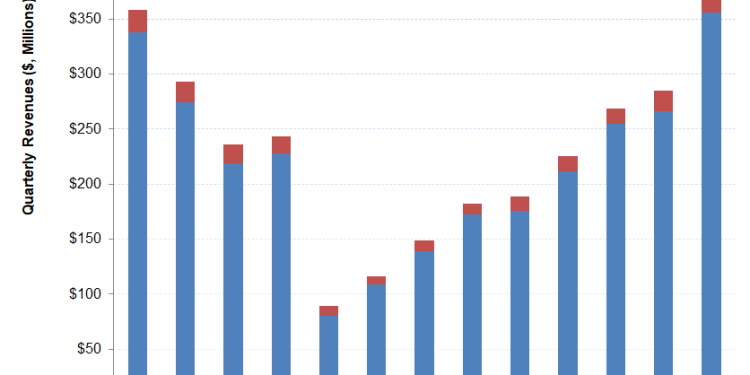- RES looks to keep its hydraulic fracturing fleet steady in 2H 2022
- However, its FY2022 capex can increase significantly to include the cost of refurbishing an existing fleet
- Robust gross and EBITDA margins point to a strong recovery
- After three years, it reinstated a quarterly cash dividend in July
The Fleet Strategy
RPC’s current focus is on long-term investments, including increasing the pressure pumping capacity. In the Q2 call, the management exuded confidence that it would secure additional work for the hydraulic fracturing fleets. Also, it looks to leverage technology to adhere to ESG-friendly pumping services standards. The current upcycle has allowed the company to reinstate dividends in Q2. In July, it declared a quarterly cash dividend of $0.02 per share. Before this, it had last paid its dividend in May 2019. Read our previous article to know more about RPC.
Regarding the number of fleets deployed, it continued to operate eight horizontal pressure pumping fleets and reactivated the ninth fleet by the end of Q2. It may idle a fleet soon and send it for refurbishment. It may put one or two additional fleets to work without incremental spending. However, the overall fleet count won’t increase. Weighing different options to retire and join fleets, the company will look to operate within ten fleets in the near-to-medium term.
A Margin Analysis And Service-wise Breakup

In early 2022, the pricing in the fracking and oilfield equipment industry improved, despite the pressure from supply chain and personnel issues following COVID. Currently, the pricing environment is a mix of spot-type customers and customers with a level of extended contract terms. So, RPC has some flexibility regarding price increases. However, the longer-term contracts are mostly less than 12 months in duration, which does not lend them suitable for steady pricing appreciation. The recovery is reflected in its Q2 margin. Its gross profit margin expanded by 390 basis points, while the EBITDA margin expanded by 650 basis points compared to Q1.
In Q2 2022, pressure pumping remained the primary revenue generator, but its share jumped to 52% from 42% in Q1, while the share of the thru-tubing service line decreased to 24%. The percentage of coiled tubing (9.4%) remained nearly unchanged.
Analyzing Industry Indicators

In the past year, until July 2022, the completed wells count growth (27% up) underperformed the drilled well count (62% up). But, the drilled but uncompleted wells declined (28% down). Haynesville and Anadarko topped (12%) among the shales that saw higher crude oil production in the past year. Crude oil production in Bakken increased the least (3% up).

The crude oil price’s upward run led to the average crude oil production in these shales going up 8% in the past year. Since the start of 2022, the US rig count pressed ahead (30% up) of the US frac spread count (20% up), as estimated by Primary Vision. So, the short-term indicators are encouraging.
What Were The Q2 Drivers?

In Q2 2022, Technical Services revenues increased by 34% compared to Q1 2022. Higher customer activity levels and pricing hikes led to sequential revenue growth. The segment’s operating income also surged (174% up) in Q2.
The Support Services segment saw a more modest revenue growth (6% up) in Q2, while the operating income increased by 20%. Overall, the company’s cost of revenues (as a percentage of revenues) decreased by 390 basis points due to a moderation in direct employment costs. Higher pricing and revenue also impacted the margin positively.
Capex Growth, Cash Flows, And Liquidity
As of June 30, 2022, the company had no debt and positive cash & cash equivalents balance ($79 million). Despite much higher revenues in 1H 2022 than a year ago, cash flow from operations decreased (22% down) due to significantly higher accounts receivable following the increase in customer activity level.
The company revised its FY2022 capex forecast significantly to $150 million from its previous guidance of $115 million. A rise in capitalized maintenance for existing equipment to include the cost to refurbish an existing fleet would primarily account for the FY2022 capex budget. A surge in capex can reduce free cash flow. To guard against any liquidity strain, the company can tap from its $100 million revolving credit facility.
Learn about RES’s revenue and EBITDA estimates, relative valuation, and target price in Part 2 of the article.













